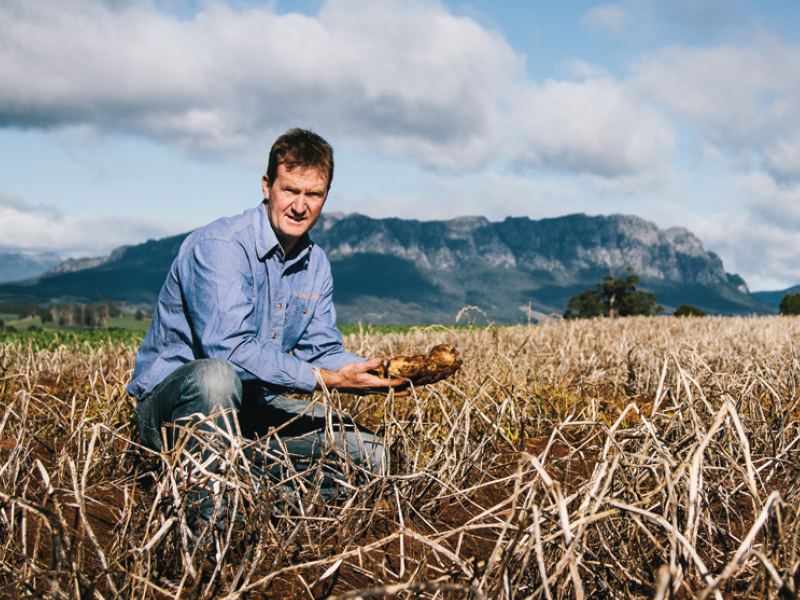
This investment has shown that cover crops are one of the most useful tools for managing intensive vegetable-growing soils, improving soil health, and increasing productivity.
The challenge
As evidence of the usefulness of cover cropping mounts, so too does Australian vegetable growers’ eagerness to harness it for local conditions.
Meet Darren
Vegetable and potato grower and Managing Director of Tasmania’s MG Farms, Darren Long, believes the advancements made in cover cropping as part of this project have been the single most important change to farming he’s seen in 30 years. “It’s an absolute game-changer,” he says. “Growers need a full suite of approaches, and although there will always be a need for traditional methods, this new research gives growers the ability to improve on-farm productivity and sustainability.”
“The ultimate aim is to be farming smarter and using cover crops to improve the overall health of our soils and the soil structure. There is a strong focus on how cover crops are grown and incorporated into the soil using a variety of low impact machinery with minimal passes. The reduction in chemical use isn’t necessarily the main point but is a bonus of cover cropping done right.
“Personally, I’ve invested almost 15 years of trial and error into cover cropping, having worked closely with other organisations to get to the stage we are at now so that as a whole industry we can share the benefits.
“The biggest learning curve that growers are getting out of the project’s research is what’s available and what’s beneficial to the soil, how it works and the different types of root systems – the exposure to all of these new cover crops takes out the guess-work. We can access material where the research tells us the companion plants that work well, which means we don’t have to guess what will or won’t work.”
The collaborative nature of the project is also something Darren finds particularly useful and says that by sharing information with other growers, the industry benefits as a whole. “I think the biggest advantage of the project’s cover crop coaching clinics and having the Hort Innovation projects is that we get to talk to other growers and see what’s working.”
Better still, the program’s having a beneficial effect on Darren’s bottom line. “The savings are at pack-out and reducing input costs to produce the crop, and we’re at a stage now where we don’t even use fungicides or insecticides, and we’re nearly at a point where we’re not using herbicides. Brassicas, or the other cover crops we use, are controlling our weed problem.”
The approach
The importance of cover cropping is increasing as vegetable farmers move to smarter, gentler, more biological approaches to soil preparation, crop protection and weed control – improving soils and soil structure. This new research project fills an important gap, bringing cover crop information together and modifying it specifically for the Australian vegetable industry.
The impact
This strategic, innovative work has revolutionised crop production for many Australian growers, transitioning orchards to intensive systems with higher yields and better profitability per hectare. This crucial research has also enabled growers to implement crop production methods that best support the use of on-farm automation and superior, tailored varieties.
